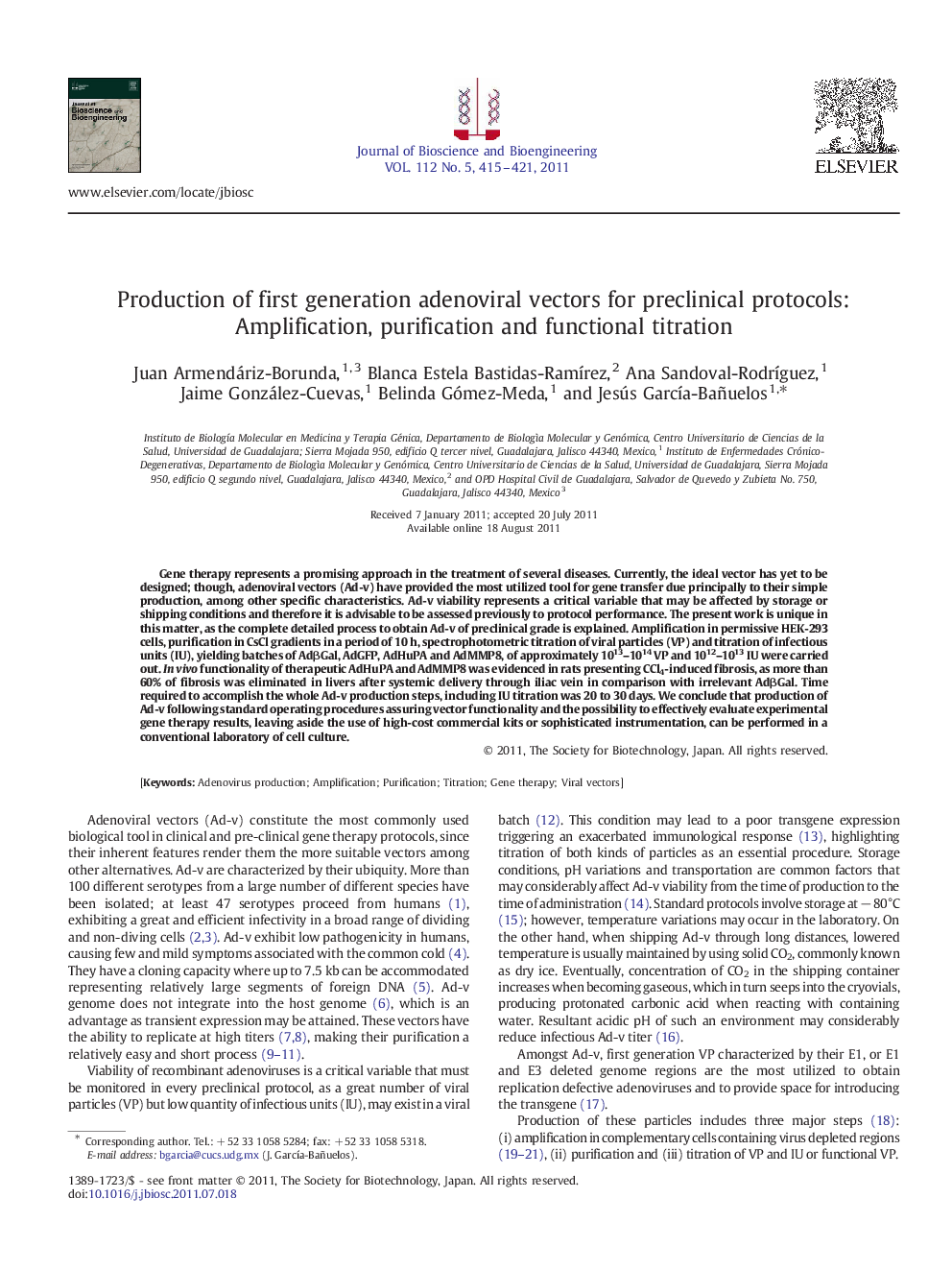| Article ID | Journal | Published Year | Pages | File Type |
|---|---|---|---|---|
| 21433 | Journal of Bioscience and Bioengineering | 2011 | 7 Pages |
Gene therapy represents a promising approach in the treatment of several diseases. Currently, the ideal vector has yet to be designed; though, adenoviral vectors (Ad-v) have provided the most utilized tool for gene transfer due principally to their simple production, among other specific characteristics. Ad-v viability represents a critical variable that may be affected by storage or shipping conditions and therefore it is advisable to be assessed previously to protocol performance. The present work is unique in this matter, as the complete detailed process to obtain Ad-v of preclinical grade is explained. Amplification in permissive HEK-293 cells, purification in CsCl gradients in a period of 10 h, spectrophotometric titration of viral particles (VP) and titration of infectious units (IU), yielding batches of AdβGal, AdGFP, AdHuPA and AdMMP8, of approximately 1013–1014 VP and 1012–1013 IU were carried out. In vivo functionality of therapeutic AdHuPA and AdMMP8 was evidenced in rats presenting CCl4-induced fibrosis, as more than 60% of fibrosis was eliminated in livers after systemic delivery through iliac vein in comparison with irrelevant AdβGal. Time required to accomplish the whole Ad-v production steps, including IU titration was 20 to 30 days. We conclude that production of Ad-v following standard operating procedures assuring vector functionality and the possibility to effectively evaluate experimental gene therapy results, leaving aside the use of high-cost commercial kits or sophisticated instrumentation, can be performed in a conventional laboratory of cell culture.
